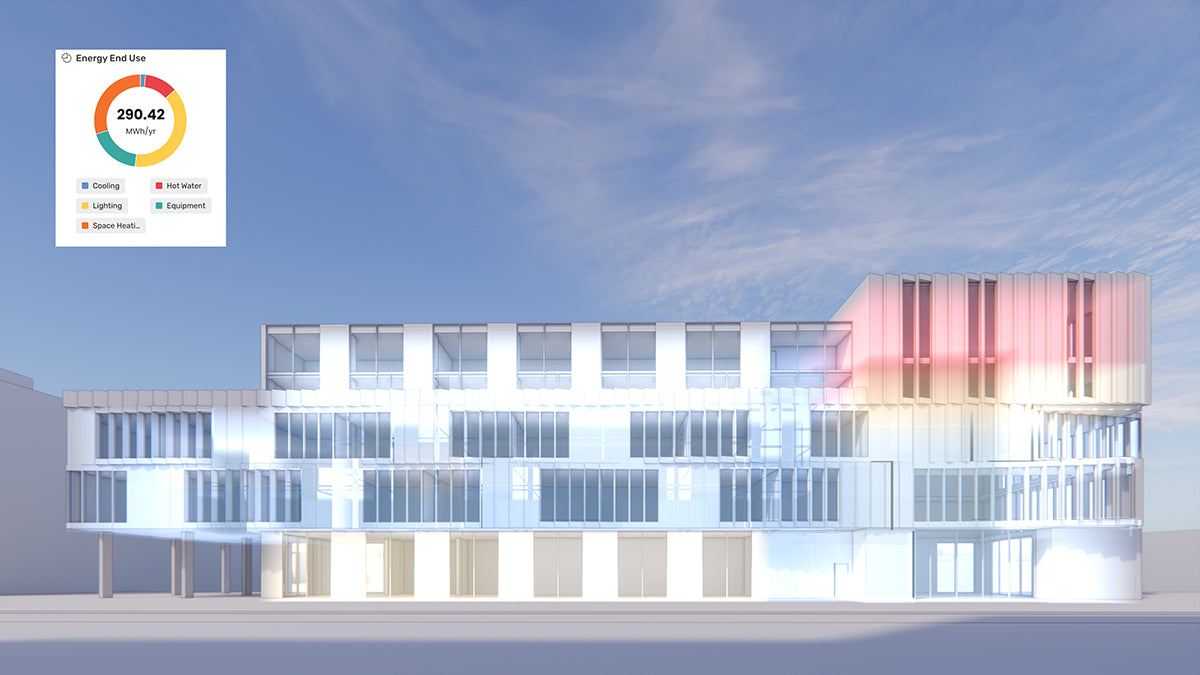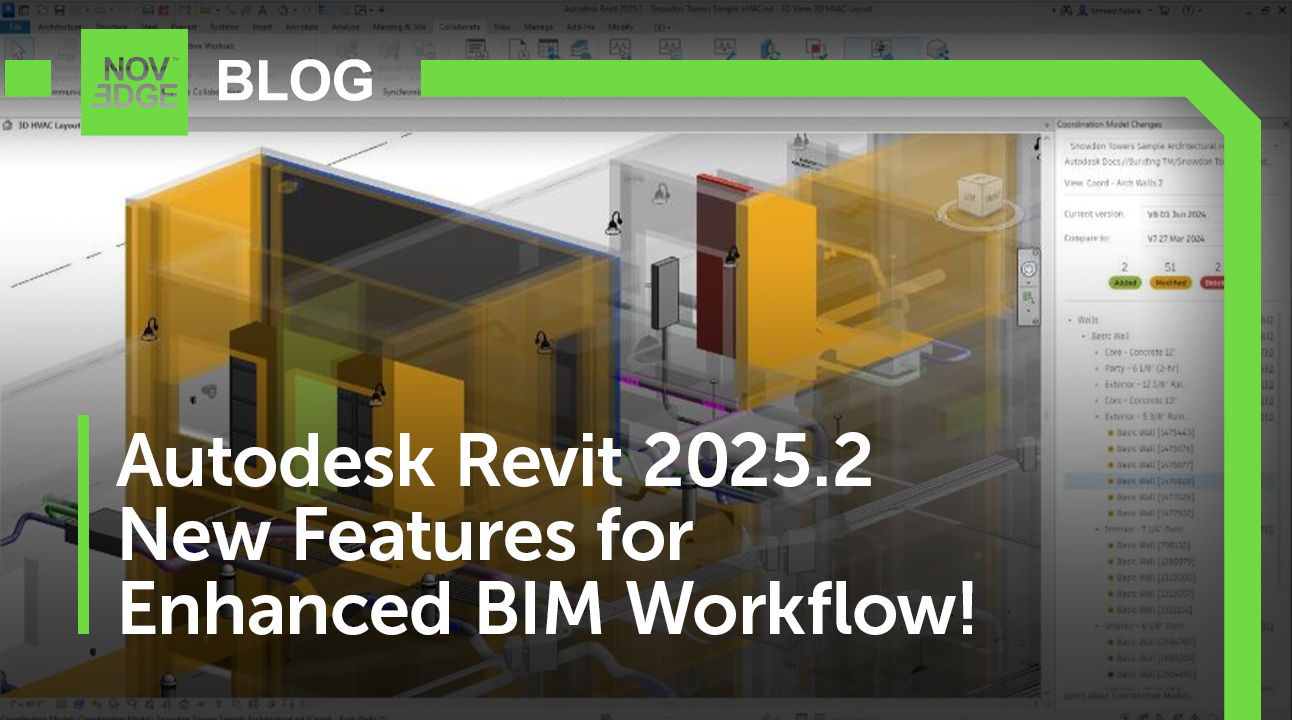Your Cart is Empty
Customer Testimonials
-
"Great customer service. The folks at Novedge were super helpful in navigating a somewhat complicated order including software upgrades and serial numbers in various stages of inactivity. They were friendly and helpful throughout the process.."
Ruben Ruckmark
"Quick & very helpful. We have been using Novedge for years and are very happy with their quick service when we need to make a purchase and excellent support resolving any issues."
Will Woodson
"Scott is the best. He reminds me about subscriptions dates, guides me in the correct direction for updates. He always responds promptly to me. He is literally the reason I continue to work with Novedge and will do so in the future."
Edward Mchugh
"Calvin Lok is “the man”. After my purchase of Sketchup 2021, he called me and provided step-by-step instructions to ease me through difficulties I was having with the setup of my new software."
Mike Borzage
Interview with Chris Williams, Vuuch Founder and CEO
January 26, 2009 8 min read

Let’s be honest: the CAD world is boring. I read CAD blogs and news every single day (using Novedge Pulse), and I rarely find something really exciting. In this market, technological improvements are very gradual and real breakthroughs happen only once in a decade. Also, the adoption of new technologies in the design and manufacturing process is usually very slow.
The first time I heared about Vuuch, I quickly realized that I was looking at one of the few truly new ideas in this field. It is always refreshing to see a novel approach to old problems. In this case we can trust the source of the new ideas: Chris Williams, the CEO and Founder of Vuuch, has already been tested by the CAD community and by the market. Let’s hear from Chris exactly what Vuuch is about.
Chris, can you tell us a bit about yourself?
I’m a mechanical engineer by education and early in my career I worked as a designer for a number of companies. During my years as a designer I worked on the board and in CAD, which ultimately led me to start a CADKEY VAR in the Boston area. After a few years I decided to go to work for the CAD OEM’s and hence worked for CADKEY and PTC in sales. After PTC I joined RAND TECHNOLOGIES where I built their East Coast operations and major account team. During my last two years at RAND I ran a process consulting group which sold to the largest Pro/ENGINEER customers in the USA. One of my main customers, United States Surgical, recruited me to run the core engineering and advanced research teams, consisting of 250 engineers developing medical devices.
along the way I’ve owned an espresso bar and done some real estate development
After spending time as a customer I moved back to PTC (living in London England) and then on to a series of startups. The first was Product DynamiX which developed a product development wiki and the most recent was Seemage, which I sold to Dassault, just over a year ago. Along the way I’ve owned an espresso bar and done some real estate development.
As CEO of Seemage (acquired by Dassault Systèmes) you have played a key role in one of the few successful start ups in CAD. Why is the CAD market so difficult for newcomers?
This is really a great question and I love the fact that you call it the CAD market! Partly because I consider myself a CAD guy, but also this in part defines an answer. CAD, like Seemage delivers clear productivity to a single person, the user. For me the most important thing is to deliver value to an end user without constraining them. Seemage success can be credited to delivering end user value through a fantastic product that was the vision of Eric Piccuezzu and James Dugalais. All I did was help the market see this value.
the most important thing is to deliver value to an end user without constraining them
Of course you need a great team and a great product, but this is not enough. You must provide the user clear value. This is where it becomes difficult and why so many startups fail. Design is hard enough and by its nature it is a freeform flexible process, so anything that constrains the users will have limited success. Many startups have elegant solutions that deliver value to a group or the company but not the user, resulting in slow or nonexistent user uptake and a lackluster business.
Vuuch, your new company, promises to bring social media technologies to the PLM world. How do you mix PLM tools (known among users for their rigidity and very structured approach to information management) with something as informal and intrinsically unstructured as the new social media tools?
It is either not fair or at least incomplete to say PLM is rigid and therefore imply nothing in the development process is rigid. PLM mirrors the rigid approach that was there before the technology. When I was working on the drafting board I had to release parts, update BOM’s, and define affectivities, all of which are very rigid. It is a fact that structured information management is part of product development. PLM automates this structured process. This doesn’t mean there are unstructured things going on in design teams.
Vuuch is about the unstructured. The design process is filled with unstructured activities
Vuuch is about the unstructured. The design process is filled with unstructured activities. This is not to say design teams are out of control, but it is to say that a big part of what they do cannot be stuck in a box with a nice neat workflow bow. For me this makes perfect sense because they are being asked to be creative.
For instance, a designer is constantly asking for bits of information from other team members. Email has become the dominate tool for this. The problem with this approach is their inbox has no understanding of what they are doing, so they are left to sift through messages and manage folders of messages and at the end they are the only one that can ever see this… regardless of who else might get value from these messages.
With the Vuuch your messages are filtered based on what you are working on. T oday we have a beta plug-in for Pro/ENGINEER and will release a SolidWorks plug-in at SWW 2009 and we will add additional plug-ins for things like Word and Excel. Beyond plug-ins your team can access discussions through our web portal at http://www.vuuch.me
So what is Vuuch and how will it affect the design process?
Let me start with the name. Vuuch is the webification of the English word vouch, which means to call or summon, truth, up hold by evidence or give personal assurance, all of which summarize the impact of Vuuch.
Everyone engaged with others in the pursuit of something, no matter if it is planning a meeting or designing the next cell phone, communicates with their team using micro messages. Micro messages are those emails, IM, or twitters you send to the team to get information you need to complete your deliverable. Like the mail you sent me the other day asking about this interview. In design these messages are about something very specific, like a bolt diameter.
Vuuch is the webification of the English word vouch, which means to call or summon, truth, up hold by evidence or give personal assurance
The problem with these messages is they grow out of control because they tend to bounce back and forth through multiple replies and therefore makes a mess of your inbox. These messages have both a short-term and long-term value. In the short-term they get you your answer and in the long-term they can tell someone how the design came to be, or why the bolt is a half inch.
People spend countless hours searching for information. Message management accounts for a large portion of this. Vuuch ties together your deliverables, discussions and people in a clean a simple web delivered solution allowing the team to create and access discussions in the context of creating their deliverables. The bottom line value is a savings in time by removing the need to search for stuff you know you have and/or allowing people to better understand the origin of design decisions.
Take a look at the quick demonstration at www.vuuch.com, come by our booth at SolidWorks World 2009 or signup for a Free Trial.
You are a Twitter user (@vuuch), as well as a blogger. How much do your own personal experiences with those tools and technologies influence your company vision?
I must admit I don’t really get Twitter. I use Twitter as an experiment and investigation of value. First I am evaluating the user interaction approach and second discrete value. Some of the best learning comes from having to force myself to turn these tools on.
A designer of a part wants to see what effects what they are doing, not everything that is happening across their team
If you looked at the original design notes for Vuuch you would discover how we borrow from technologies like email, blog and IM. Email provides a great way to attach information, blogs provide organized persistence and IM is about real-time and a single message stream, all aspect of Vuuch.
Current social media applications are not effective for product development as they do not understand context. A tool like Twitter or Yammer has no understanding of what a development team is trying the deliver. If I Twirl, Twitter, Yammer, IM and RSS I end up with noise. A designer of a part wants to see what effects what they are doing, not everything that is happening across their team.
The major obstacles to an effective distribution of information and data within a company are often more political than technical. How does Vuuch approach these challenges?
If political barriers exist, they are more about process. Vuuch empowers and organizes the informal design discussions across the product lifecycle. Vuuch is not focused on predefined process and therefore not constrained by political barriers.
One of the major drawbacks of socially enabled content is that the amount of feedback and contributions can easily become overwhelming. How does Vuuch cope with this problem?
This is the exact problem we solve. Feedback is not a side effect of socially enabled content. In design discussions, feedback has to do with the topic being discussed and resolving multiple points-of-view. Most people would agree that an email message is not socially enabled content, but take a look at anyone of your own email discussions. The back and forth between the participants creates an overwhelming situation.
With Vuuch your discussions are organized through the topics or the items they are associated with
With Vuuch your discussions are organized through the topics or the items they are associated with. For example if you open a CAD file or an Excel file, Vuuch will present only the discussions about that file. Or you can ask Vuuch to display only your CAD or Solidworks discussions, or your discussions about a single part design, which might be represented by multiple files. Vuuch understands the relationships between deliverables, people and discussions. Following on with the example above, Vuuch can generate a web page for each part of your product and make this page available to your team (future release – current implementation filters based on associated files). You can think of this page as a clearing house for all discussions about that part. This page allows team members who don’t use applications to engage in the discussions about a specific design, for example a project manager or procurement person might use this page to track what is going on with a design.
The net result is Vuuch organizes your design discussions and allowing you to interact with the information that is important to you when and where it is important, meaning in the context of what you are doing.
Does having a complete history of all the conversation that occurred during the product development process come with any negative implications (e.g. additional liability for the company)?
The issue is how to manage the history of discussions. Look at your email today, a deleted email is really not deleted. A good friend of mine is an electronic forensic specialist and much of her work is about tracking not only emails, but other documents and there version history. She can find what you are convinced is deleted. With Vuuch a company will have these discussions in a single place and therefore be able to better manage their exposure.
I would like to thank Chris for taking the time to answer my questions. If you have any questions for Chris or for Novedge, please leave a comment below and we will be glad to answer.
Franco Folini
For more information on this topic, take a look at this foldier sPression, an online collection of the most interesting videos and articles about Vuuch.
Also in NOVEDGE Blog

How the AEC Industry Shifted Towards Essential Sustainable Building Design
August 15, 2024 4 min read
Explore sustainable building design strategies at NOVEDGE, focusing on eco-friendly practices for resilient and efficient structures.
Read More
Unlocking New Realms of Design with Enscape 4.1: Introducing Impact Add-on and Lot More
August 02, 2024 2 min read
Discover Enscape 4.1's new features, including Enscape Impact and artistic visual modes, to elevate design efficiency at NOVEDGE.
Read More
Explore Autodesk Revit 2025.2: New Features and Enhancements for Enhanced BIM Workflows
July 30, 2024 3 min read
Read MoreSubscribe
Sign up to get the latest on sales, new releases and more …


